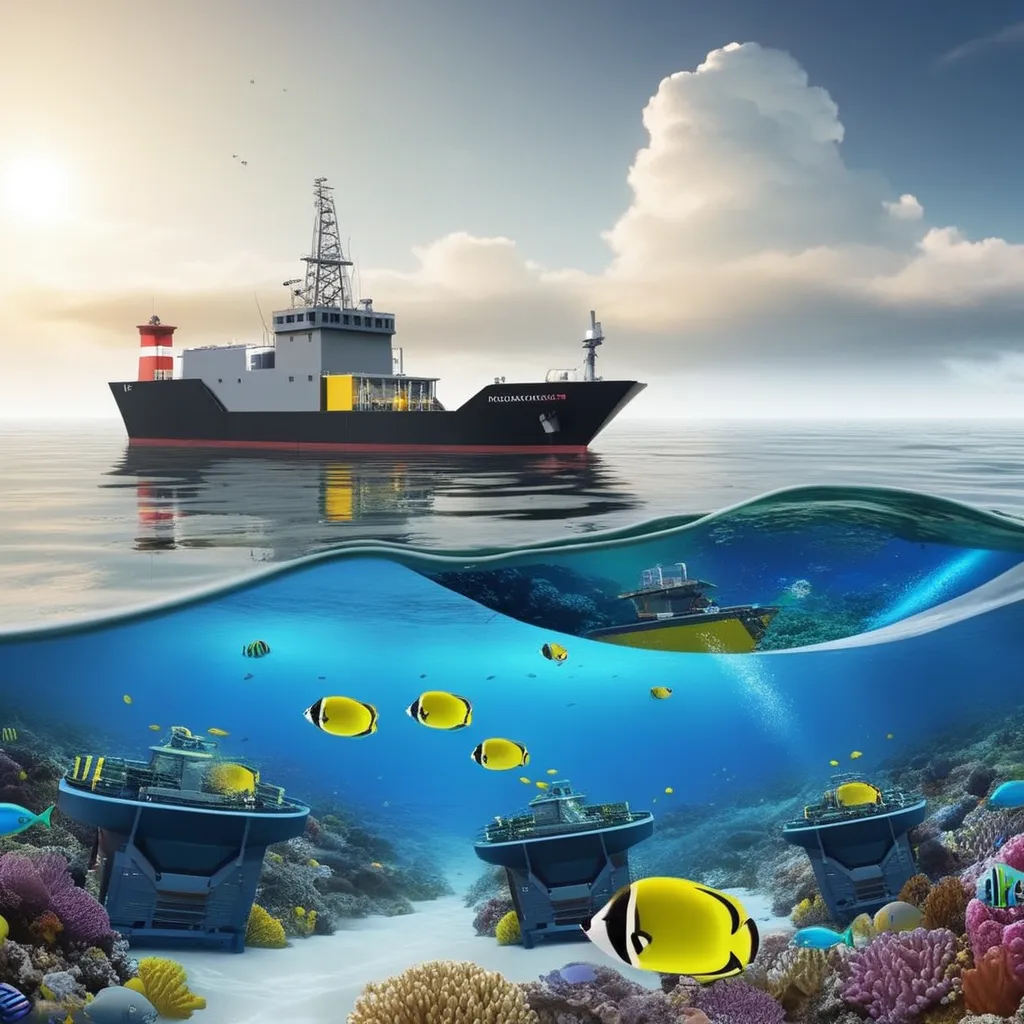Revolutionary Nanobots Clean Pollution from Oceans
Picture this: a pristine, azure ocean teeming with vibrant marine life, free from the scourge of pollution. While this may seem like a utopian dream, recent advancements in nanotechnology have brought us closer to making it a reality. Nanobots, tiny machines at the forefront of innovation, are poised to revolutionize the way we clean our oceans.

A Personal Connection
Witnessing the Impact of Ocean Pollution
I've always had a deep affinity for the ocean. Its vastness and the life it harbors have always captivated me. But during a recent beach vacation, what should have been a serene experience was marred by the sight of plastic waste strewn along the shore. It was a stark reminder of the pressing issue of ocean pollution.
The gravity of the situation hit me as I saw seabirds struggling amidst the discarded plastic. I couldn't help but wonder if there was a way to undo the damage and restore the beauty of our oceans.
The Rise of Ocean-Cleaning Nanobots
A Miniature Marvel
Nanobots, as the name suggests, are minuscule machines engineered to perform precise tasks at the nanoscale. These remarkable creations have found their way into various fields, from medicine to environmental science. In the context of ocean pollution, nanobots offer a glimmer of hope.
Targeted Cleanup
One of the primary advantages of nanobots is their ability to target specific contaminants. Whether it's microplastics, oil spills, or harmful chemicals, these tiny robots can be programmed to seek out and neutralize pollutants with unprecedented accuracy.
How Nanobots Work
Swarming Efficiency
Nanobots work in swarms, akin to a school of fish navigating the ocean. Each individual nanobot is equipped with sensors that detect pollutants. Once identified, they work collectively to remove or neutralize the contaminants. This swarm approach ensures thorough and efficient cleanup.
Eco-Friendly Solutions
Nanobots are designed to be eco-friendly. They can break down pollutants into harmless substances or gather them for safe removal. This minimizes the environmental impact of cleanup operations.
Remote Monitoring
Advanced AI systems monitor and control nanobots, ensuring they stay on course and perform their tasks effectively. This remote monitoring capability makes it possible to deploy nanobots across vast expanses of the ocean.
Challenges and Considerations
While the potential of nanobots in cleaning oceans is promising, several challenges and considerations must be addressed:
Safety and Environmental Impact
Ensuring that nanobots themselves do not pose a threat to marine life and ecosystems is critical. Rigorous testing and research are necessary to assess their long-term impact.
Scalability
Scaling up the deployment of nanobots to cover large areas of polluted ocean waters will require significant investment and logistical planning.
Ethical Concerns
As with any emerging technology, ethical questions regarding control, ownership, and potential misuse must be carefully considered.
The Road Ahead
The use of nanobots to clean pollution from oceans represents a remarkable leap forward in our efforts to combat environmental degradation. While there are challenges to overcome, the potential benefits for marine ecosystems and the planet as a whole are undeniable.
As we move forward, it's essential to approach this technology with responsibility and a commitment to preserving the natural world. Nanobots may be small, but their potential to make a big difference in our oceans is enormous.
The dream of crystal-clear, pollution-free oceans is no longer confined to our imagination. With the help of nanobots, it may well become a reality, allowing future generations to enjoy the beauty and bounty of our seas.

No comments:
Post a Comment